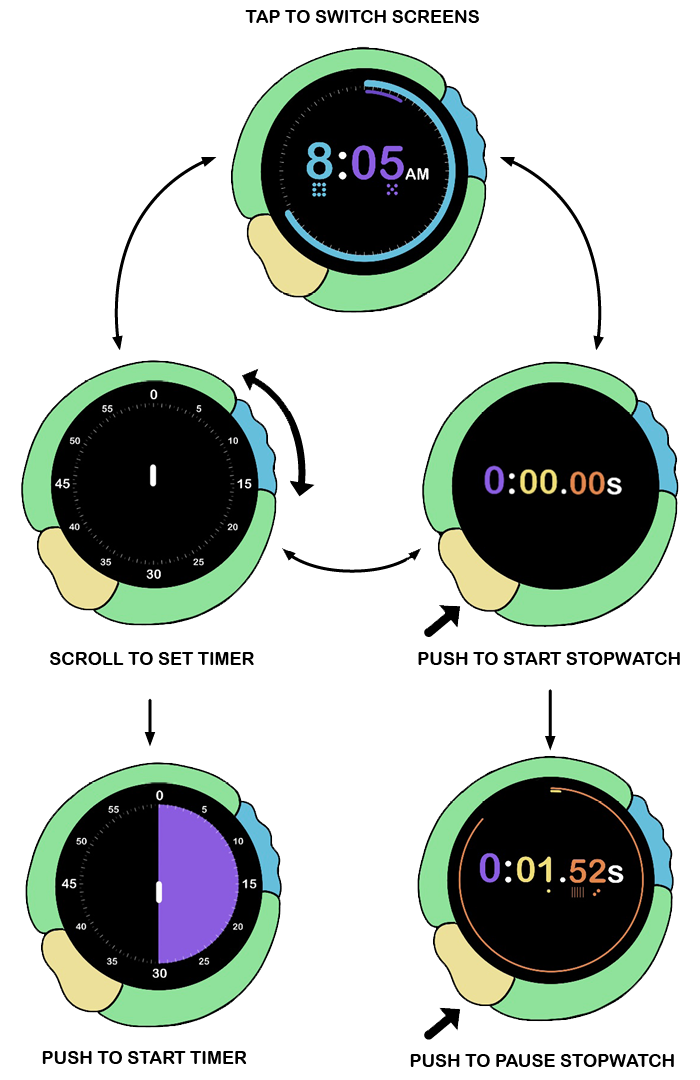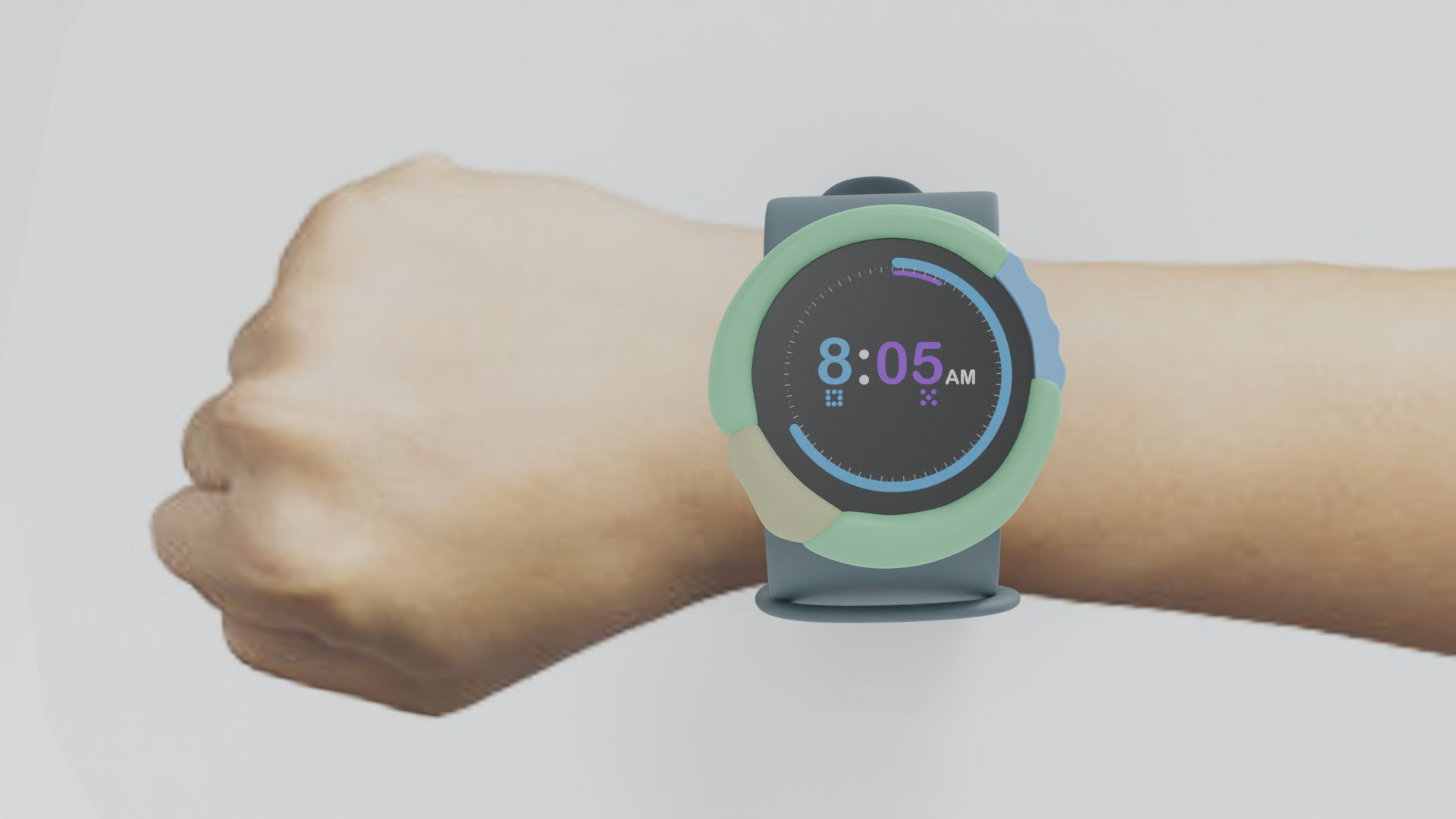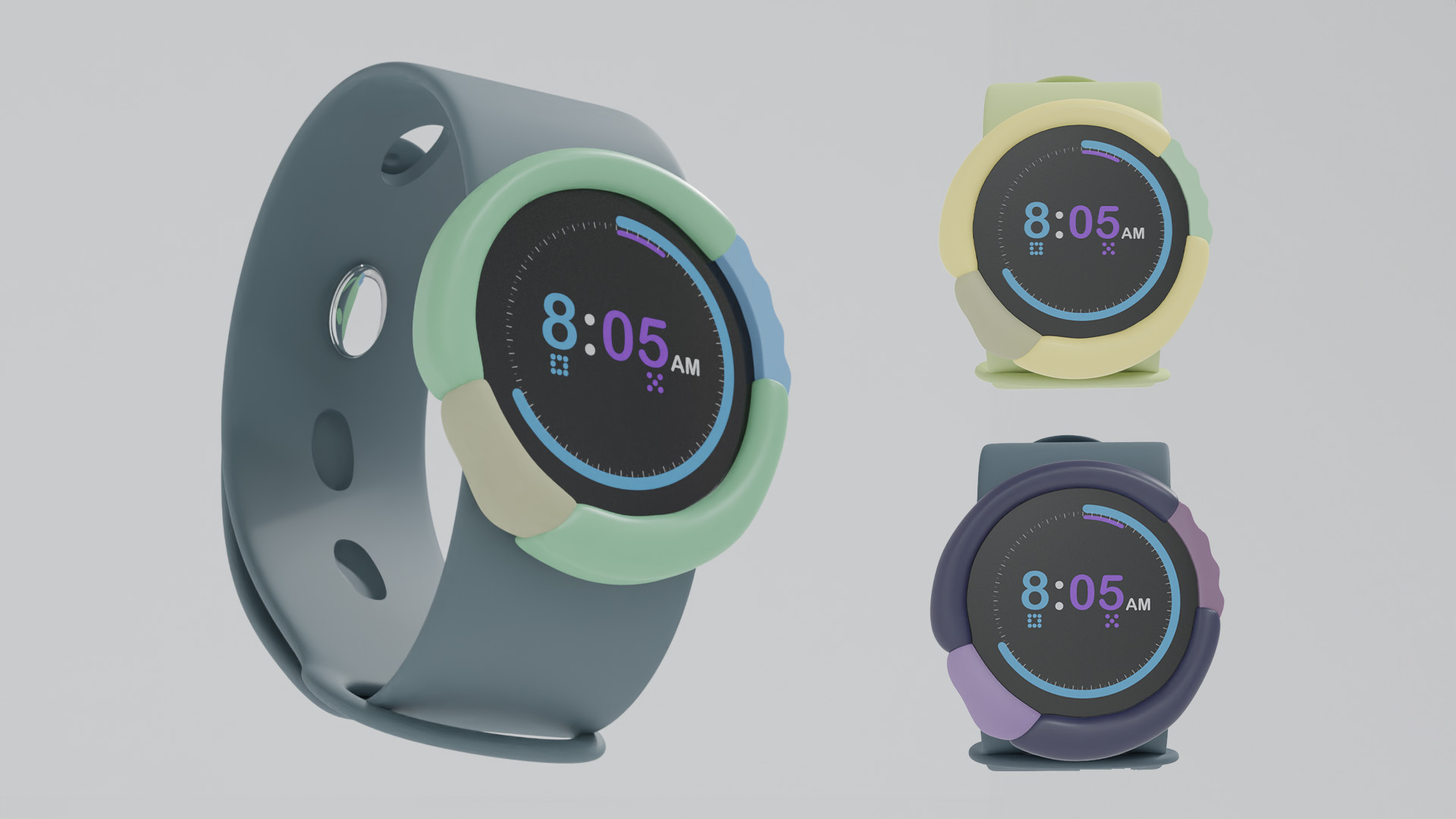DigiSense is a wristwatch that helps children with dyscalculia strengthen their understanding of time and numbers through visual learning aids.
I wanted to challenge myself to design a solution for a market of people who operate outside of the typical user experience, where existing solutions are not tailored to their needs. Dyscalculia is a condition that impairs a person’s understanding of basic mathematical concepts, which in turn impacts their perception of time.
DigiSense emerges as a solution to empower children with dyscalculia by combining intuitive interfaces with innovative visualization techniques to bridge the gap between abstract mathematical concepts and real-world experiences.
Dyscalculia greatly reducees a child’s ability to connect visual symbols to their assigned values. This makes it difficult for them to understand and percieve the passage of time, which can lead to anxiety and frustration in their daily lives.
DigiSense empowers children with dyscalculia to be more confident and independent in their daily lives by providing them with assistive UI elements to help them visualize time and strengthen their understanding of numbers.
Dyscalculia is a condition that is often misunderstood and underdiagnosed, and there is a lack of resources available to help children with dyscalculia succeed in their daily lives and in school. It is often thought of as “number dyslexia”, and current interventions in therapy typically involve counting exercises and relying on physical tools to help visualize numbers.
.WygrwAiA.jpg)
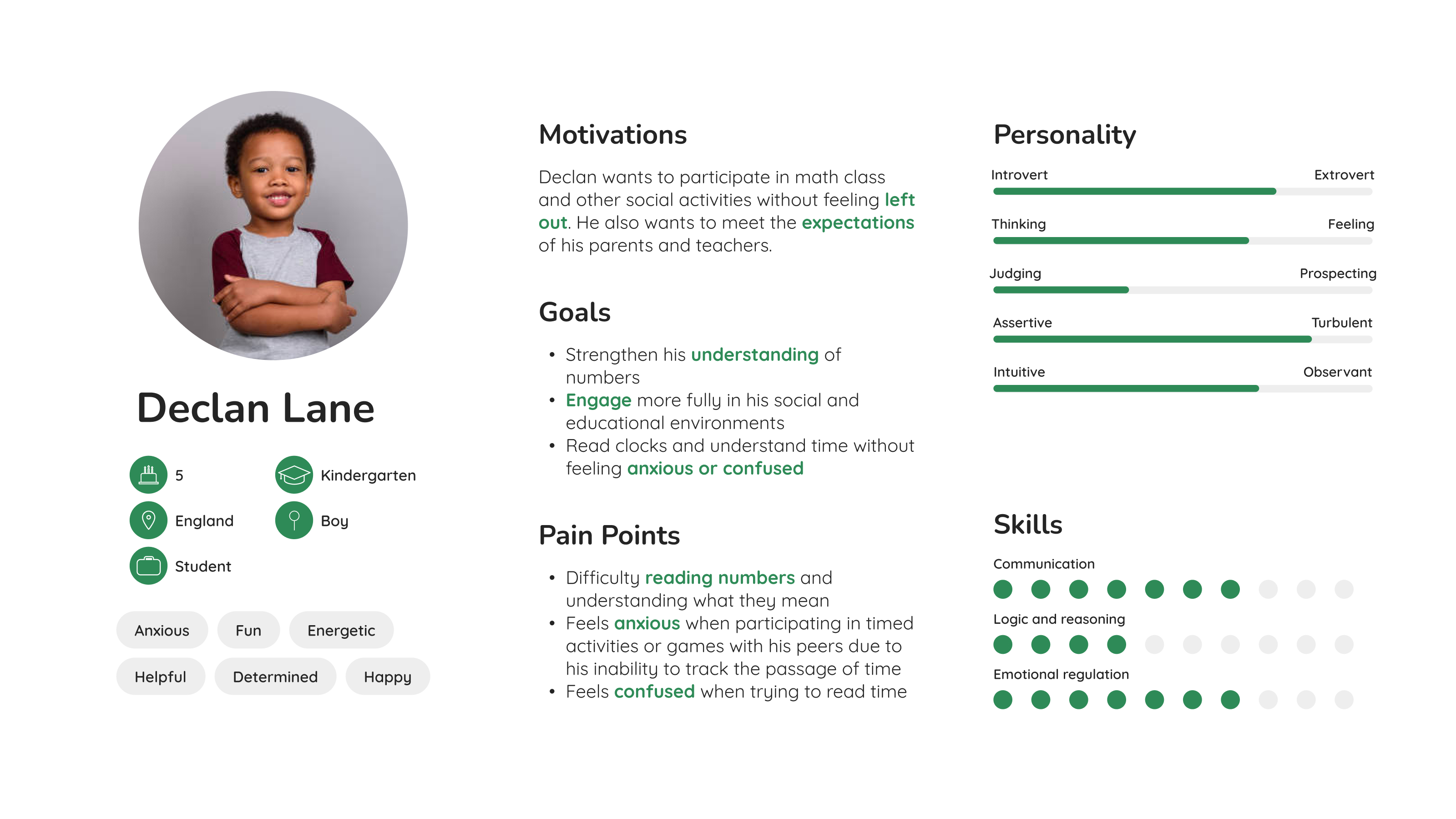

20 years old
Clinically diagnosed with dyscalculia since second grade
When I was in second grade, my teachers noticed I was constantly using fingers and had difficulty doing the most basic addition and subtraction. My teacher recommended that I get tested, so my parents took me to a specialist and I got diagnosed with dyscalculia.
I don’t keep track of time. I just write down everything I have to do, and I will never know how long something takes. I can’t even give you an estimate.
I’m always worried about being late to events so I end up going to places super early. I will have no idea how much time has passed and I end up just waiting around for a long time.
I take a long time and have to count with my fingers. (Counting the time passed between 3:45 - 4:06) That’s 21 minutes, right? I counted 22 the first time then double checked.
Dyscalculia is a math-related learning disability that stems from challenges in visual-spatial processing, so it’s difficult for people with dyscalculia to link the abstract meaning of something to its symbolic representation.
We use a variety of tools such as unit blocks, the number line, and just counting the number of physical objects in everyday life. Some of the tools that appear in school that can be helpful are multiplication tables, since it gives them a visual representation of the numbers.
Visual indications such as progress bars are definitely helpful. Learning to read analogue clocks help with getting a sense of how much time has passed rather than just seeing a number on a digital clock. Time Timers are a great tool that implement progress bars as a visual representation of time passing.
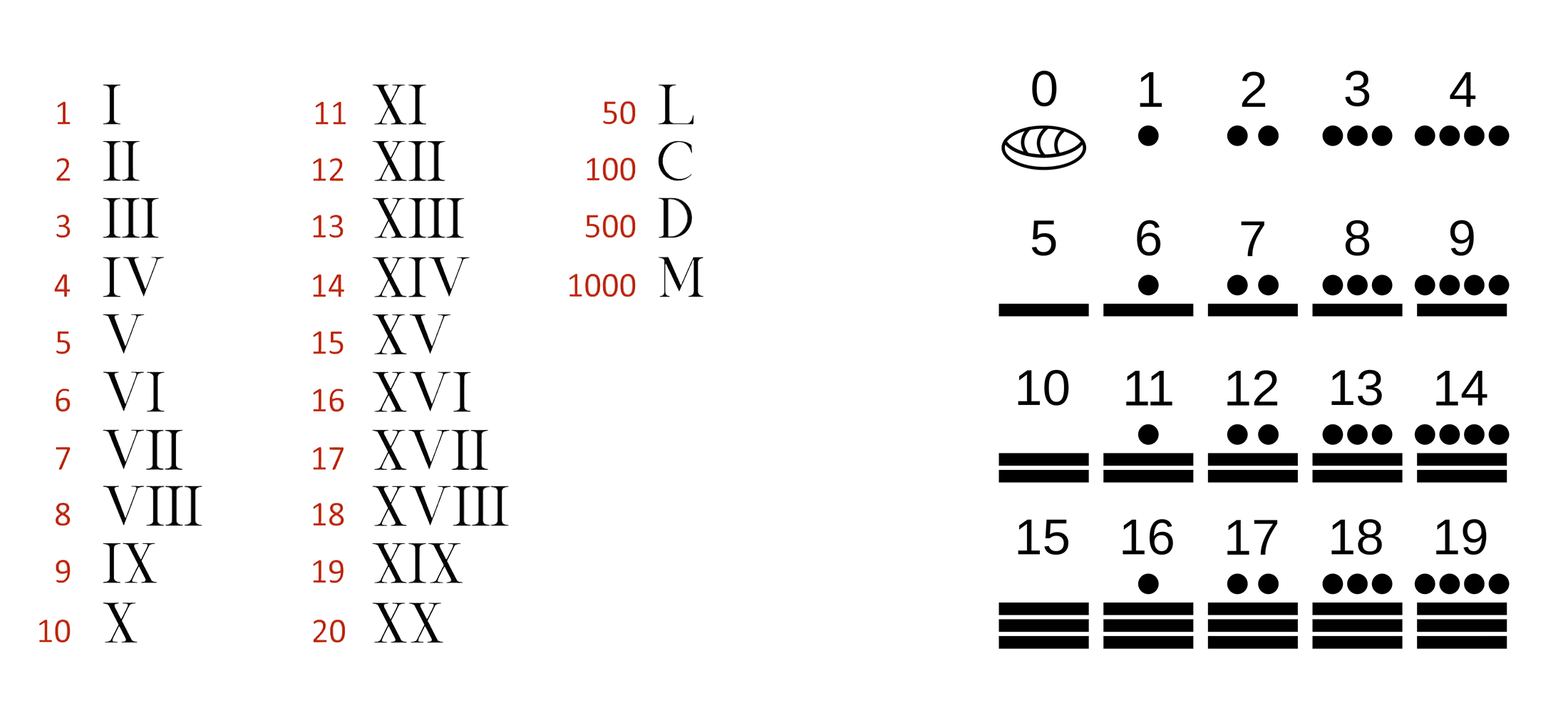
The Roman system relies heavily on the memorization of complex rules and symbol combinations to determine the overall value of a numeral. It requires a strong association between the symbols and their values, and similar systems will only serve to confuse children with dyscalculia.
The Mayan system follows a clear pattern and straightforward rules, relying heavily on lines and dots to represent numbers. Having only 2 neccessary symbols to represent numbers makes this system intuitive and easy to understand, making it a great candidate for visual learning aids.
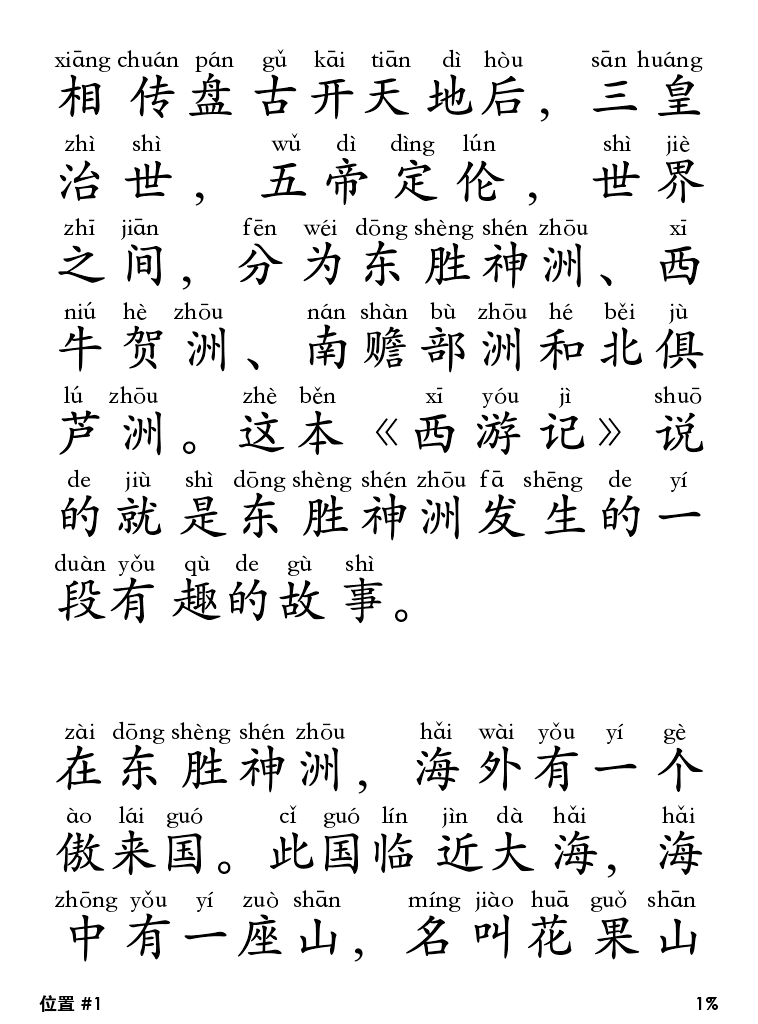
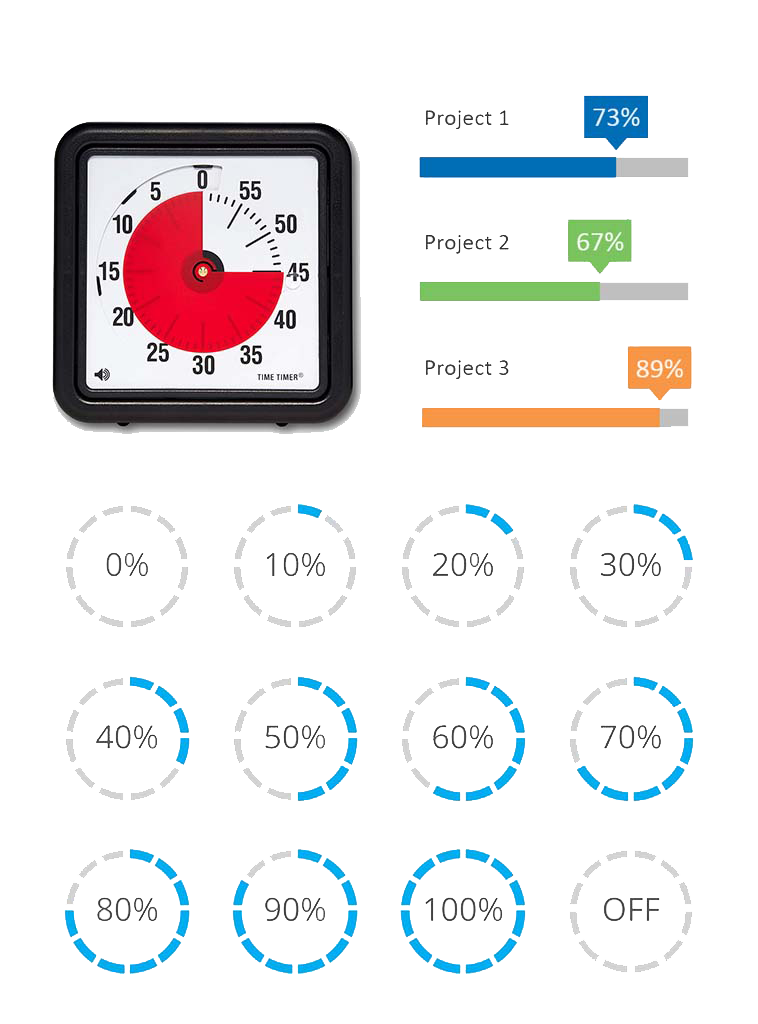
Pinyin is a system of romanization for standard Mandarin Chinese, and it is used to teach children how to read and write Chinese characters. It uses the latin alphabet to represent the sounds of characters, making it a great example of how visual learning aids can be used to bridge the gap between abstract concepts and real-world experiences.
Progress bars are a great example of how visual indications can be used to represent the passage of time. They are simple and intuitive to understand, and they are often used in everyday life to help people visualize a task’s duration, progress, or completion. Time Timers are a great tool that implement progress bars as a visual representation of time passing.
I wanted to create a product that would be intuitive and easy to understand for children with dyscalculia, so I started with designing the UI elements and learning aids that would be used to help them visualize time and numbers. I then moved on to designing a more child-friendly and engaging form factor for the wristwatch.
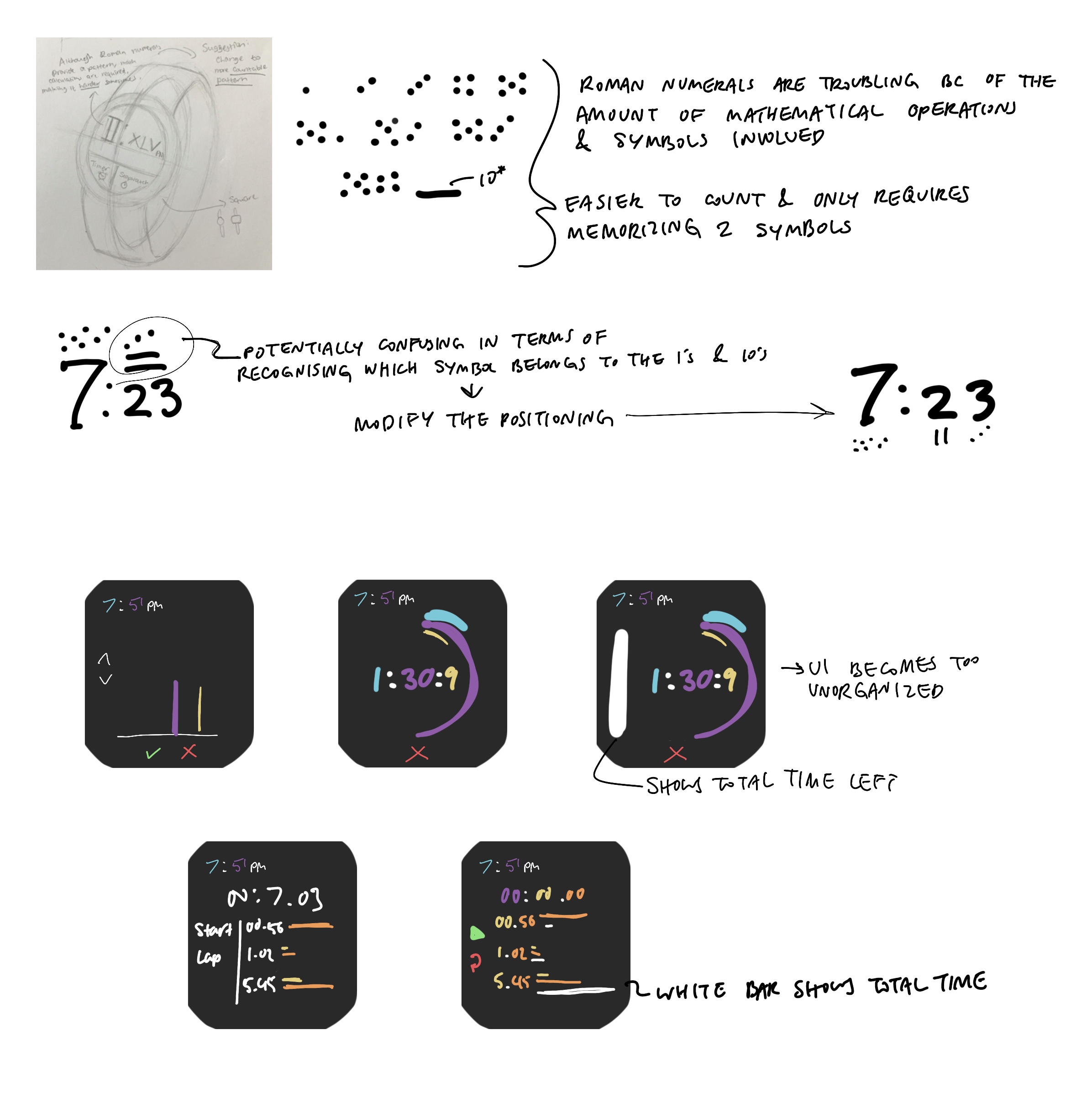
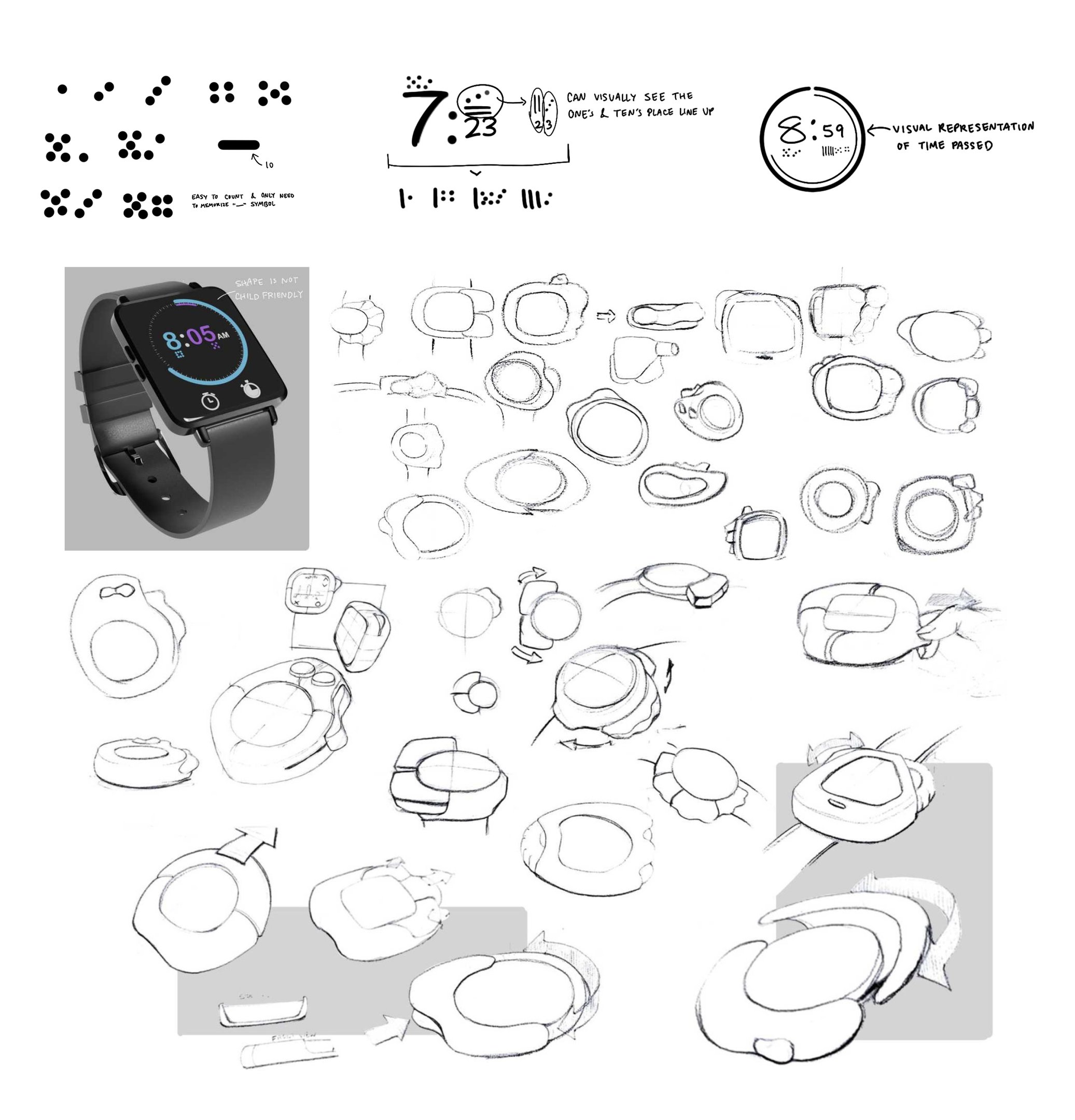
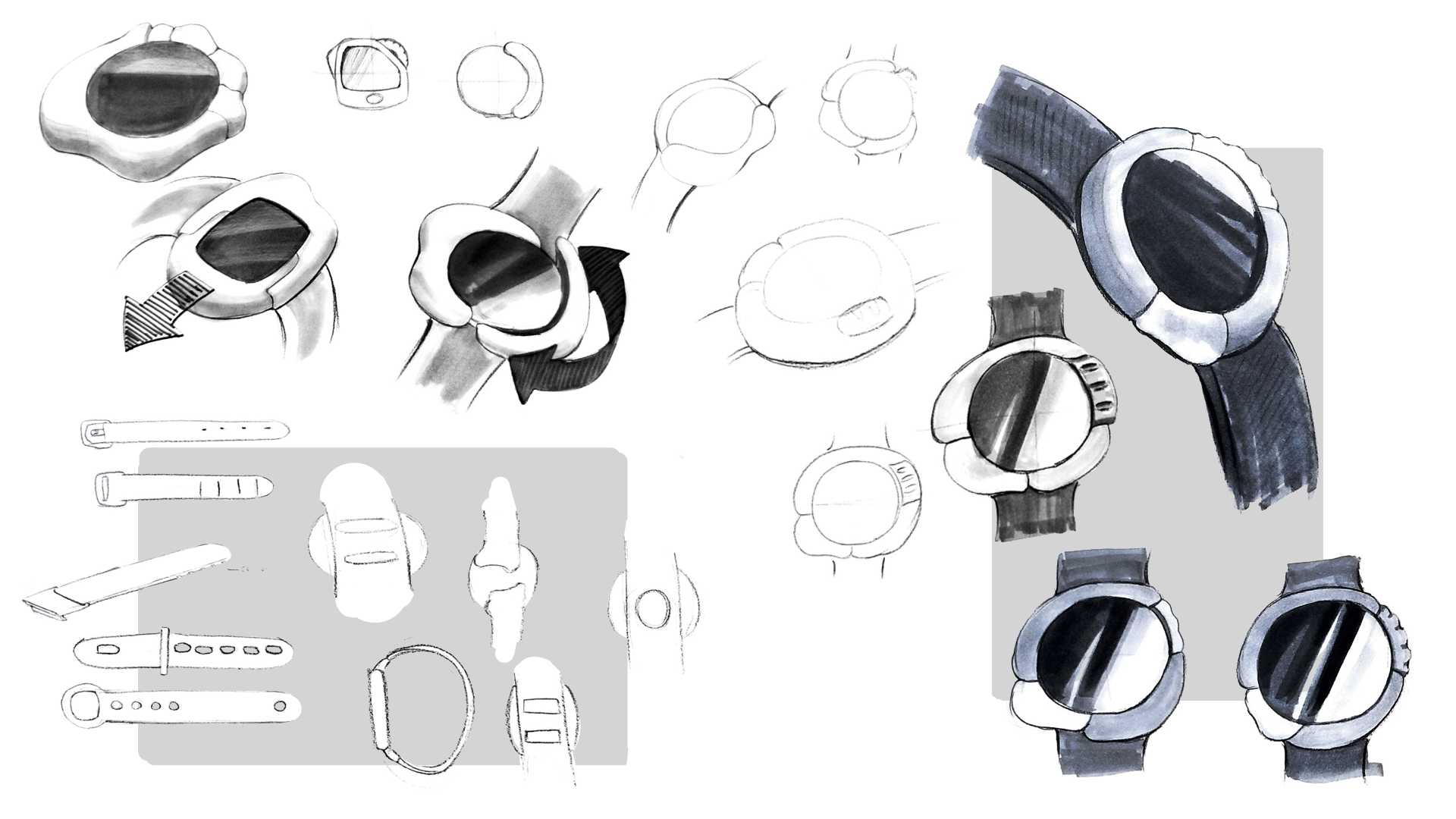
Children with dyscalculia, ages 4-8
Arial Rounded MT Bold
ABCDEFGHIJKLMNOPQRSTUVWXYZ
abcdefghijklmnopqrstuvwxyz
1234567890
1
2
3
4
5
6
7
8
9
10
#6EA9E0
#EADC84
#D28A56
#A07FEB
#87C987
